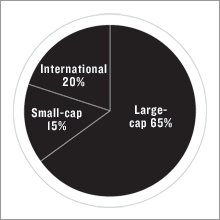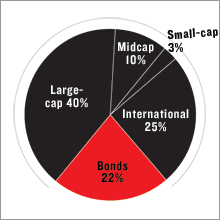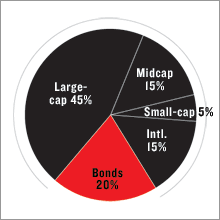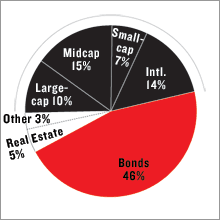Money Magazine Portfolios
1. First, a young couple just starting out in investing. This is a relatively simple portfolio; note the lack of bonds. The couple can use their emergency cash savings as a substitute for bonds.

2. A 57 year old woman who got started late and needs to catch up. Note that this is a riskier portfolio (more international, more small cap, some mid cap as opposed to just a bunch of large cap) BUT there's more diversification and a bond portion to help lower the overall risk in the portfolio.

3. A couple in their mid to late 30s who have come into a $100k inheritance. They have some retirement savings, but not a lot. Most of their equity is tied up in their house. Money calls this a conservative growth portolio; note diversification is similar to the aggressive growth portfolio, but the percentage allocations are slightly different. At this stage of their lives, I'd make this a bit more aggressive (more international, maybe) but this certainly works.

4. Finally, a "mostly retired" couple in their early 60s. They've got $1.1 million saved up, and want to make it last as long as possible. They have calculated they need to withdraw 3% a year to fund their lifestyle (will you be able to live on $33k in retirement?). The retired husband has taken up the "hobby" of managing the money and doing some online trading. This "retiree portfolio" is less aggressive, though still well diversified. Also, note that 3% is set aside for the husband to play with and that some real estate (an REIT) has been added to add dividend income to the portfolio (the REIT helps save on taxes, too).

These are pretty good portfolios; I'm glad to see Money didn't go overboard with creating complex portfolios.
